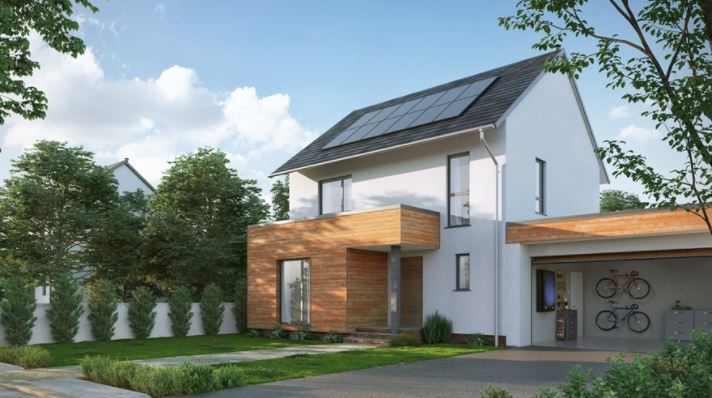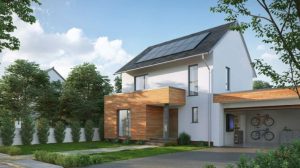Installing renewables could not only cut your home’s carbon emissions and save on energy bills; but could improve your home’s SAP score too.
Solar panels – also known as solar photovoltaics (PV) – are a popular addition to self-build homes. They work by capturing the sun’s energy and converting it into electricity you can use in your home.
Why self-builders can maximise the benefits of solar
Incorporating solar panels into the design of your self-build – rather than adding them once a property is built – means that you can think carefully about their positioning to maximise aesthetics and their effectiveness.
You’ll need space on the roof, ideally an unshaded spot facing south, and at a pitch angle of between 30 and 40 degrees.
Not sure about the aesthetics? By including them at design stage, you can position them in line with the building’s contours and minimise their visual impact. Panels built into a roof are typically more expensive than those that sit on top.
Solar panels need little maintenance, but you’ll still need to keep an eye on nearby trees to ensure that they don’t begin to overshadow them. If they are tilted at 15 degrees or more, they will also be cleaned by rainwater, ensuring optimal performance.
The electricity generated by your solar panels can power appliances around your home and help reduce your running costs. For renewable heating, you could consider installing a heat pump and use the solar electricity to help power it. Or, you could use the sun’s energy to heat your water with solar thermal technology.
Smart Export Guarantee
There will be times when the electricity generated is more than you are using, so the surplus exports to the grid to be used by somebody else.
By signing up to a Smart Export Guarantee (SEG) tariff, you could earn money on the electricity you export. SEG tariffs pay households for electricity exported to the grid. This financial incentive could earn you income throughout the year, as well as help cover your installation costs in the long run.
Making the most of the electricity you generate
By incorporating energy storage or an electric vehicle (EV) chargepoint, self-builders have an opportunity to use more of their on-site electricity generation instead of exporting it.
Energy storage systems allow you to capture the excess electricity generated from your solar panels and save it until a time when it is useful to you. By installing a diverter into your solar PV system, you could store the energy as hot water in a thermal store.
You could also consider installing a battery to store excess electricity. If you have an EV, or are considering buying one, installing your own chargepoint means you can use the electricity generated by your solar panels to charge your vehicle.
By using more of your generated energy and having to import less from the grid, your energy storage system can reduce your fuel bills and your home’s carbon emissions further.
Read more: Home Energy Scotland





